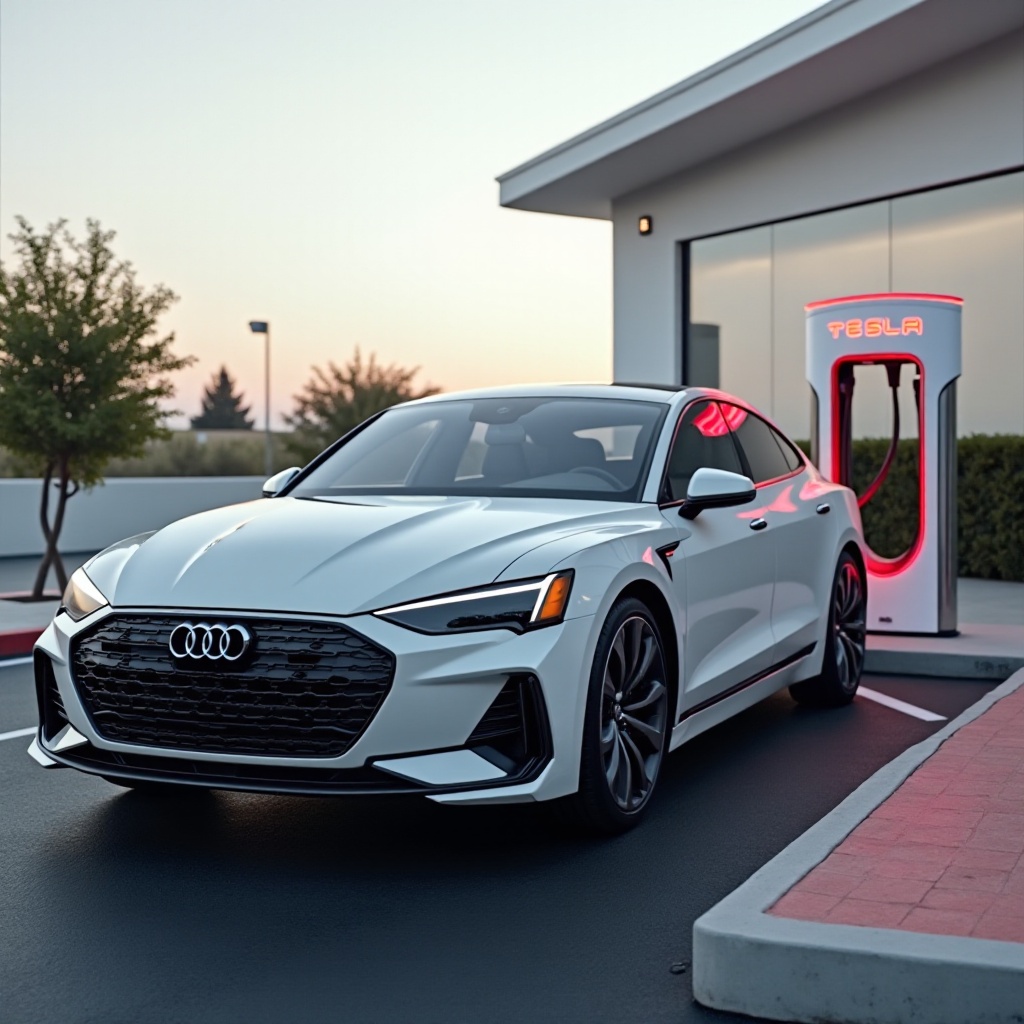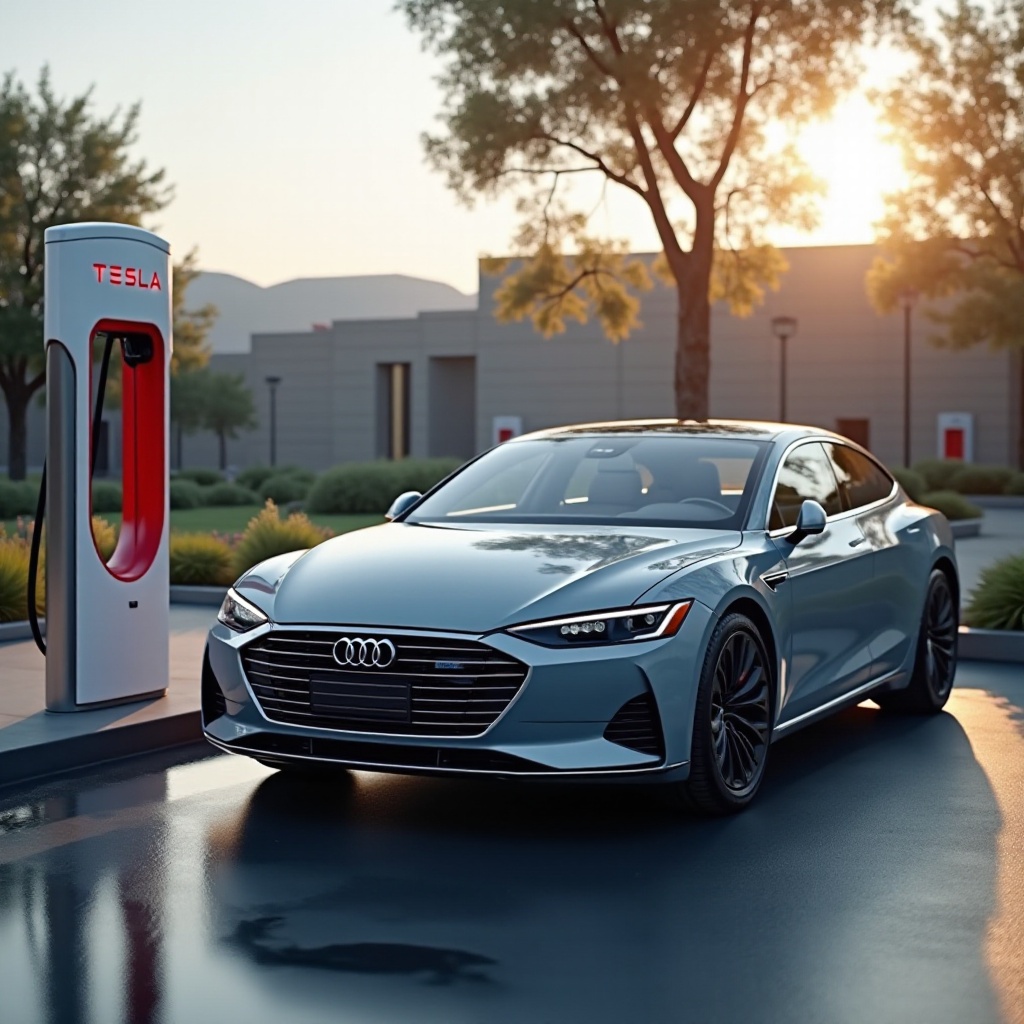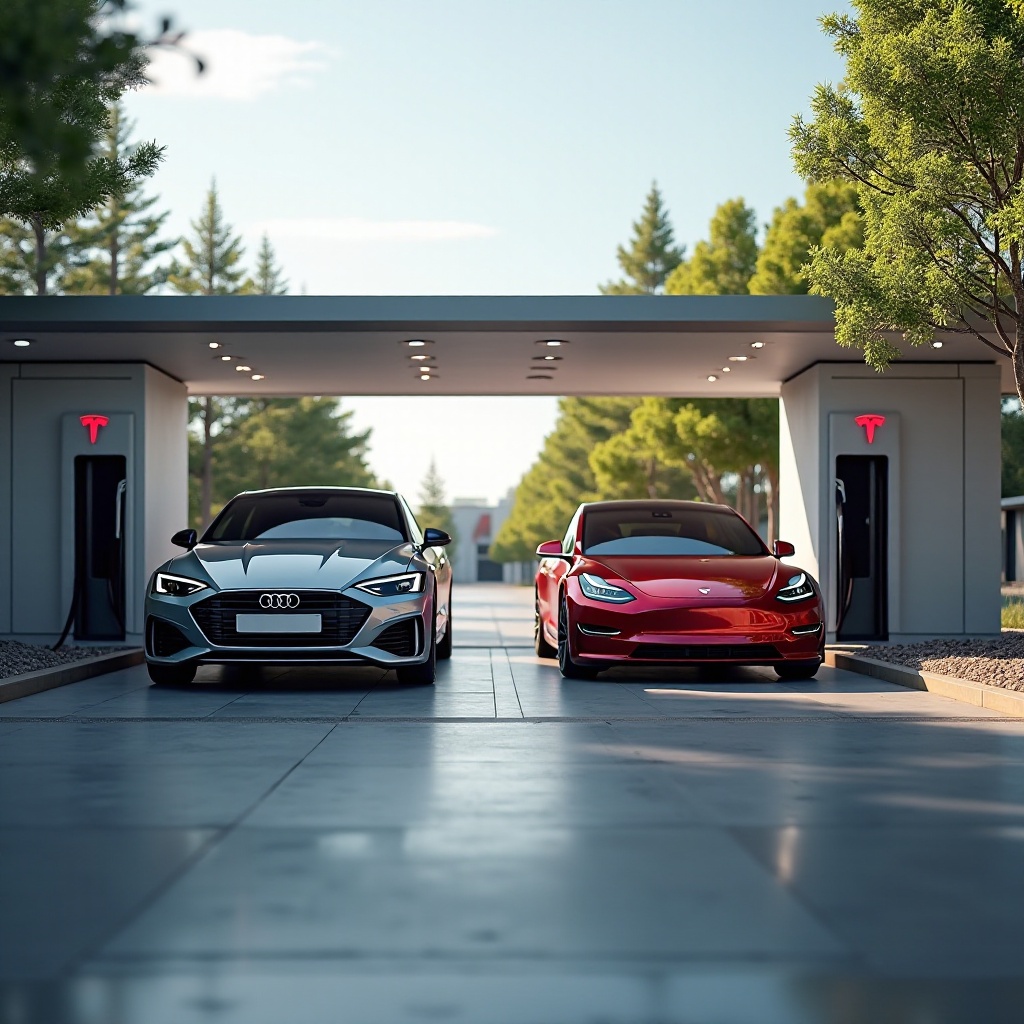Introduction
As electric vehicles continue to rise in popularity, charging infrastructure has become a critical concern for manufacturers and consumers alike. Tesla has established a strong lead with its extensive Supercharger network, providing fast and reliable charging for their vehicles. However, with other automakers like Audi making significant strides in electrification, the compatibility between different charging networks becomes an important topic. This article delves into the possibility of Audi vehicles using Tesla Superchargers, analyzing technical compatibility, recent developments, industry trends, and real-world experiences.

Overview of Tesla’s Supercharger Network
Tesla’s Supercharger network is one of the most comprehensive and advanced fast-charging networks worldwide. With over 25,000 Superchargers in various locations, these stations are specifically designed to provide high-speed charging for Tesla vehicles. The network’s proprietary technology, including the unique Tesla connectors, enables a seamless and efficient charging experience for Tesla owners.
Tesla’s commitment to expanding its charging infrastructure continues to grow, as they aim to alleviate range anxiety and promote long-distance travel for electric vehicle (EV) users. The Supercharger network’s key strength lies in its speed and the strategic placement of stations along major highways and urban areas, ensuring that Tesla drivers are always within reach of a charging station.
Audi’s Electrification Journey and Charging Capabilities
Audi has embarked on an ambitious journey toward electrification, with a strong lineup of electric vehicles like the Audi e-tron, Q4 e-tron, and the upcoming Audi e-tron GT. These models feature advanced battery technology, providing impressive ranges and swift charging capabilities that cater to the demands of modern drivers.
Charging infrastructure for Audi vehicles centers around the Combined Charging System (CCS), a widely adopted standard among European and American automakers. CCS enables fast DC charging compatible with many public charging networks, including the growing number of third-party providers. Audi has partnered with some of these networks to offer its customers convenient access to a wide range of charging stations, aiming to create a seamless charging experience similar to Tesla’s.

Technical Compatibility and Challenges
Integrating Audi vehicles with Tesla Superchargers presents several technical challenges. The most significant hurdle is the difference in connector standards. Tesla uses its proprietary connector in most markets, while Audi’s vehicles rely on the CCS standard. This disparity means that Audi vehicles cannot simply plug into a Tesla Supercharger without an appropriate adapter.
Connector Incompatibility
To bridge the gap between Tesla’s proprietary connector and CCS, an adapter would be necessary. However, Tesla currently restricts the use of its Supercharger network to its vehicles only, indicating that the company would need to authorize and produce such adapters for other brands to utilize the network legally and practically.
Software Integration
The communication protocols between the car and the charger also differ between Tesla and Audi. Effective and secure charging requires seamless communication to manage power delivery, charge rates, and vehicle identification. Developing and maintaining compatibility between different software systems adds another layer of complexity.
Authorization and Billing
Tesla’s Supercharger network employs a streamlined billing system linked directly to the user’s Tesla account. Compatibility would require Audi and Tesla to collaborate on integrating billing systems, ensuring Audi users can access and pay for the service without hassle.
Despite these challenges, the potential benefits of cross-network compatibility make it an enticing possibility. This collaboration could provide enhanced convenience and a stronger infrastructure for EV owners across brands, promoting broader adoption of electric vehicles.
Recent Developments and Industry Trends
The evolving landscape of electric vehicle charging infrastructure has seen several exciting developments and trends that hint at future possibilities for cross-brand compatibility:
Opening Up Superchargers
Tesla has begun to explore opening its Supercharger network to other electric vehicles in specific markets. Pilot programs, such as the one in the Netherlands, allow non-Tesla EVs to use the Supercharger network, provided they use an adapter and register through the Tesla app. This development indicates a potential shift towards greater inclusivity in EV charging infrastructure.
Industry Collaboration
Collaborations among automakers and charging network providers are becoming more common, with joint ventures like IONITY in Europe leading the charge. Such partnerships could pave the way for collaborative efforts between Tesla and other automakers like Audi, ultimately benefiting the entire EV ecosystem.
Regulatory Push
Governments and regulatory bodies are increasingly pushing for unified charging standards to ensure a seamless EV charging experience. Policies favoring interoperability might encourage companies to work together, leading to adaptations and agreements that enable cross-network compatibility.
These trends suggest a growing recognition of the need for cooperative efforts in building a cohesive and comprehensive charging infrastructure, benefiting all stakeholders in the electric vehicle market.

Real-world Experiences and Case Studies
Several EV owners have experimented with using Tesla Superchargers for non-Tesla vehicles, particularly through the use of third-party adapters. While these attempts have been largely unofficial and often fraught with technical difficulties, they provide valuable insights into potential real-world applications.
For instance, some Audi e-tron owners have reported relative success in using modified CCS to Tesla adapters. Nonetheless, these modifications often void warranties and bring about unreliable results, highlighting the need for official support and development to achieve true compatibility. Successful case studies could prompt both companies to consider cooperative strategies for expanding charging options.
Conclusion
The question of whether Audi vehicles can use Tesla Superchargers is complex, involving technical, logistical, and regulatory challenges. While direct compatibility is currently restricted, recent developments and industry trends suggest a movement towards greater interoperability. Cross-network collaboration would greatly enhance the EV owning experience, diversify charging options, and ultimately contribute to broader adoption of electric vehicles.
Frequently Asked Questions
Is it currently possible for Audi cars to use Tesla Superchargers?
As of now, Audi cars cannot officially use Tesla Superchargers due to differences in connector standards and software protocols. However, Tesla has initiated pilot programs in certain regions allowing non-Tesla vehicles with appropriate adapters and software integration. These efforts may pave the way for future compatibility.
What are the technical requirements for an Audi to use a Tesla Supercharger?
For an Audi vehicle to use a Tesla Supercharger, an adapter to bridge the connector differences between CCS and Tesla’s proprietary plug would be necessary. Additionally, Audi would need to integrate Tesla’s communication protocols and billing systems into its software to ensure a smooth and secure charging experience.
Are there any future plans for Tesla and Audi to collaborate on charging infrastructure?
While there are no confirmed collaborations between Tesla and Audi regarding charging infrastructure, recent developments such as Tesla’s pilot programs suggest a potential for future cooperation. Industry trends and regulatory pressures for standardization might further encourage such partnerships, enhancing charging accessibility for all EV users.
